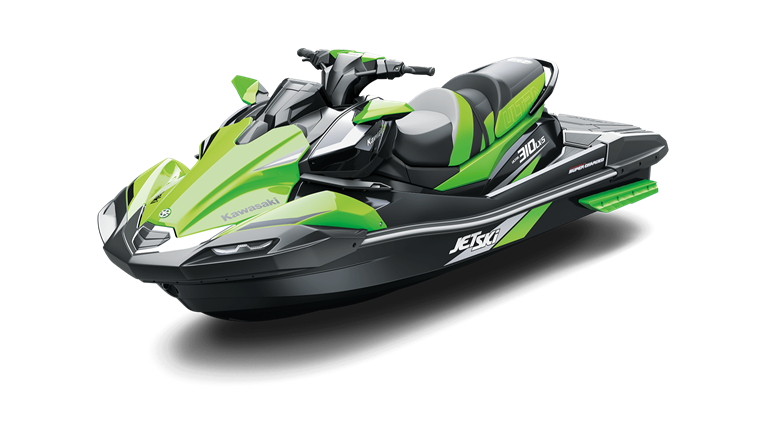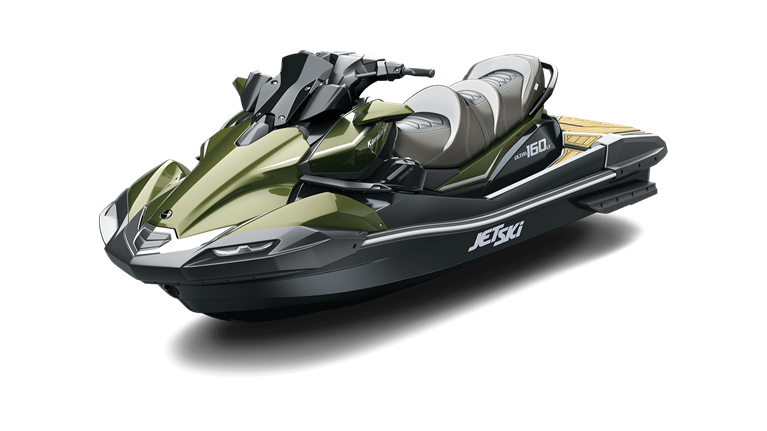To repair crazing and cracking in a Kawasaki Jet Ski cluster, you may follow these steps primarily based on commonplace restore strategies:
Materials Needed
Screwdriver set
Isopropyl alcohol (for cleaning)
Sandpaper (numerous grits: 2 hundred, 400, 800, 1500, 3000)
Plastic polish
Clear sealant or epoxy (if essential)
Replacement elements (if required)
Repair Steps Of Kawasaki Jet Ski Cluster
Disassemble the Cluster:
Carefully dispose of the screws from the cluster housing using a screwdriver. Take observe of the order and region of every screw for reassembly.
Inspect for Damage:
Examine the show and surrounding components for signs and symptoms of crazing or cracks. Identify areas that want to be restored or substituted.
Clean the Surface:
Use isopropyl alcohol to clean the region across the cracks. This will remove any debris and make certain better adhesion for maintenance.
Sand the Cracked Area:
Start with coarse sandpaper (two hundred grit) to softly sand down the crazed areas. Gradually pass to finer grits (up to 3000) to clean out the surface. This will help do away with visible cracks and prepare the surface for sprucing.
Polish the Surface:
After sanding, observe a plastic polish to repair the readability of the lens. Use a smooth fabric or sponge to buff the region until it shines.
Apply Sealant or Epoxy:
If there are deep cracks or if any components are free, practice a clean sealant or epoxy to boost the region. Follow the manufacturer’s instructions for curing time.
Reassemble the Cluster:
Once the whole lot is dry, carefully reassemble the cluster by reversing the disassembly steps. Ensure all screws are tightened nicely.
Test Functionality:
Power for your Jet Ski to make sure that every one presentations are functioning correctly and that no similarly troubles stand up.
Additional Tips
If you come upon vast damage that cannot be repaired with sanding and sharpening, bear in mind changing the affected parts totally.
Regular renovation and cleaning can assist prevent destiny crazing and cracking.
By following these steps, you have to be able to efficiently restore crazing and cracking on your Kawasaki Jet Ski cluster, restoring its capability and look.
To restore crazing and cracking in a Kawasaki Jet Ski cluster, follow these steps:
Materials Needed
Screwdriver: For disassembling the cluster.
Isopropyl alcohol: For cleansing surfaces.
Replacement parts: Such as LCD polarized movie and tactile push buttons.
Sealant or adhesive: For reassembly.
Step-with the aid of Step the Repair Process
Disassemble the Cluster:
Carefully get rid of the screws to open the cluster casing. Be cautious now not to damage any inner components at some point in this process.
Inspect for Damage:
Look for symptoms of crazing, such as great cracks at the surface of the show. These are regularly because of aging or environmental exposure.
Clean the Components:
Use isopropyl alcohol to ease any corrosion or particles from the inner surfaces, specifically around the LCD and electrical contacts.
Replace Damaged Parts:
If the LCD polarized movie is damaged, update it with a brand new one. Similarly, if tactile buttons are wiped out, replace them toensuree sure right functionality.
Reassemble the Cluster:
Once all additives are wiped clean and changed, cautiously reassemble the cluster. Ensure that every seal is intact to prevent moisture ingress.
Test the Display:
Power on the cluster to test if the display functions successfully. If problems persist, a ssimilarinspection can be wished.
Prevent Future Crazing:
Store your Jet Ski in a shaded place or use protective covers to minimize publicity to UV mild and harsh climate situations, that may exacerbate cracking and crazing.
Additional Tips
If you are uncertain about any step, forget towatch watchg repair videos for visible stewhich includesncludes those to be had on structures like YouTube.
For chronic problems or tremendous damage, consulting a professional restoration provider may be advisable to keep away from further complications.
Crazing in tool clusters, mainly in Jet Skis, refers to the formation of high-quality cracks or traces on the surface of the display or shielding cover. This phenomenon can notably affect both the aesthetics and functionality of the device cluster.
What is Crazing Cracking in Instrument Clusters?
Description of Crazing and Its Causes
Crazing is characterized by using a community of tiny cracks that seem on the floor of materials, regularly because of stress or environmental factors. In the context of Jet Ski instrument clusters, those cracks can broaden inside the clear plastic or acrylic covers that protect the show. Common reasons encompass:
UV Exposure: Prolonged publicity to daylight can degrade the material, leading to brittleness and cracking.
Temperature Fluctuations: Rapid modifications in temperature cancausen enlargement and contraction, stressing the material.
Manufacturing Defects: Inadequate curing of materials throughout production can put them at risk of crazing through the years.
How It Differs from Regular Cracking
Crazing differs from regular cracking in that it consists of many small, first-rate cracks in place of large, extra-extreme breaks. While ordinary cracks may additionally compromise structural integrity, crazing frequently influences appearance and might cause in addition deterioration if no longer addressed.
Factors Contributing to Crazing in Jet Skis
Several factors contribute to crazing in Jet Ski instrument clusters:
Material Quality: Poor-best plastics or acrylics are extra prone to crazing.
Environmental Conditions: Exposure to water, salt, and chemical substances can boost upgradation.
Improper Storage: Storing Jet Skis without good enough protection from UV rays can result in premature put on at the tool cluster.
To efficiently repair crazing in a Kawasaki Jet Ski device cluster, it’s critical to gather the right gear and substances, recognize the repair method, and observe safety precautions. Here’s a complete manual to help you through the restore.
Tools and Materials for Repairing Crazing
Recommended Products for Treating Crazing
Plastic Polish or Filler: An exquisite plastic polish can assist minimize the appearance of crazing. Look for merchandise particularly designed for automotive or marine use.
Epoxy Fillers: These are beneficial for filling deeper cracks. Ensure the epoxy is appropriate for plastic surfaces.
Sanding Discs: Use diverse grits (beginning from one hundred twenty to 240) to ease out the repaired place after applying filler.
Gelcoat Repair Kit: If the crazing impacts gel coat surfaces, a gel coat repair kit with colloidal silicas can be important.
Tools Needed for the Repair Process
Screwdriver: For disassembling the cluster.
Putty Knife or Plastic Applicator: For making use of fillers and smoothing surfaces.
Sanding Block or Orbital Sander: For sanding down the repaired place.
Cleaning Cloths: For cleaning surfaces earlier than and after upkeep.
Rotary Tool: Optional, for creating grooves in deeper cracks to beautify adhesion.
Safety Precautions to Follow
Wear Protective Gear: Use gloves and protection goggles to protect in opposition to dirt and chemicals at some stage in the restoration process.
Work in a Well-Ventilated Area: Ensure adequate airflow while the usage of chemicals like epoxy or polish to avoid breathing in fumes.
Follow Manufacturer Instructions: Always adhere to recommendations furnished with restored products to make certain safety and effectiveness.
Step-by-Step Repair Guide for Crazing
1. Disassembling the Cluster for Easier Access
Begin by way of carefully removing screws from the device cluster with the usage of a screwdriver. Keep the song of all screws and components as you disassemble.
Once open, look into the quantity of the crazing and ease the region with a moderate detergent or isopropyl alcohol to do away with any dirt or debris.
2. Applying a Plastic Polish or Filler
For minor crazing, apply a plastic polish at once onto the affected place using a tender material, rubbing in round motions till the crazing diminishes.
For deeper cracks, use an epoxy filler. Mix according to manufacturer instructions and observe it into the crackwith the usage of a putty knife, ensuring it fills absolutely.
3. Sanding and Buffing for a Smooth Finish
After permitting the filler to therapy as in step with commands, start sanding with a hundred and twenty-grit sandpaper to level the floor.
Progressively transfer to finer grits (240-grit) until you obtain a smooth end that blends seamlessly with the encompassing place.
Finally, clean off any dust with a cloth, and if vital, observe a final polish to restore shine.
To successfully prevent crazing on your Kawasaki Jet Ski tool cluster and understand while bearing in mind a substitute, observe those recommendations:
Preventing Crazing Inside the Future
Protective Covers and UV-Blocking Films
Use Protective Covers: Invest in extraordinary covers designed in particular for Jet Skis. These covers shield the instrument cluster from UV rays, dust, and moisture.
UV-Blocking Films: Consider making use of UV-blockading movies without delay onto the device cluster. These films can substantially reduce UV exposure, thereby minimizing the danger of crazing.
Proper Storage Methods for Your Jet Ski
Indoor Storage: Whenever feasible, store your Jet Ski indoors or in a shaded area to guard it from direct daylight.
Use a Trailer: Keep your Jet Ski on a trailer when no longer in use. This permits less difficult transportation and decreases publicity to environmental elements.
Routine Checks for Early Detection
Regular Inspections: Frequently test the instrument cluster for any signs and symptoms of crazing or damage. Early detection can help cope with issues before they get worse.
Clean Regularly: Rinse your Jet Ski with clean water after each use to get rid of salt and particles that can contribute to cloth degradation.
When to Consider Replacing the Cluster

Signs That the Damage is Beyond Repair
Extensive Cracking: If you observe huge cracks or significant crazing that affects visibility or capability, it may be time for a replacement.
Water Ingress: If the cracks allow water to enter the cluster, this can lead to similar damage and electrical issues.
Costs of Replacement vs. Repair
Repair Costs: Minor maintenance can regularly be achieved at a low fee, but significant damage may additionally require professional help, which may be extra costly.
Replacement Costs: Weigh the price of a brand new cluster in opposition to restoration expenses. If repairs are near replacement prices, opting for a new unit can be more useful.
OEM vs. Aftermarket Cluster Options
OEM (Original Equipment Manufacturer): These elements are made using the producer and usually offer higher compatibility and reliability however may additionally come at a better fee.
Aftermarket Options: These can be cheap however vary in excellent. Research evaluations and ensure compatibility before purchasing.
Key Features of Kawasaki Jet Ski Models
| Feature | Jet Ski Ultra 160 | Jet Ski Ultra 310 |
|---|---|---|
| Engine | 1,498cc Inline 4-Cylinder | Supercharged 1,498cc |
| Hull Design | 22.5 Degree Deep-V Hull | 22.5 Degree Deep-V Hull |
| Seating Capacity | 3 passengers | 3 passengers |
| Instrumentation | 7″ TFT with smartphone connectivity | 7″ TFT with smartphone connectivity |
| Special Features | Smart Reverse, LED lights | Launch Control Mode, Adjustable Handlebar |
Model Variants and Prices
| Model Variant | MSRP | Notable Features |
|---|---|---|
| Jet Ski Ultra 160LX-S | $17,199 | Side-access storage, Rearview camera |
| Jet Ski Ultra 160LX | $18,199 | JETSOUND® Audio System, Adjustable seat |
| Jet Ski Ultra 310X | $19,199 | Spacious foot wells, Enhanced storage options |
| Jet Ski Ultra 310LX-S | $20,199 | LED accent lights, Multi-mount rails |
Historical Model Reference (1973-2024)
| Year | Model Name | Engine Size (cc) | HP | Passengers |
|---|---|---|---|---|
| 1976-1981 | JS400 | 400 | 24.5 | 1 |
| 1986-1989 | JS550 | 530 | 41 | 2 |
| 1999-2005 | Ultra 150 | 1,176 | 145 | 3 |
| 2000-2004 | STX D.I. | 1,071 | 130 | 3 |
Conclusion
Maintaining your instrument cluster in pinnacle circumstances is essential for both safety and performance while working your Jet Ski. Regular inspections, defensive measures, and timely repairs or replacements will beautify your using prolong the lifestyles of your watercraft. By following those suggestions, you may limit the threat of crazing and make sure that your instrument cluster stays purposeful and visually attractive.
FAQs on Crazing Cracking in Kawasaki Jet Ski Clusters
1. What causes crazing in Jet Ski instrument clusters?
Crazing is in most cases due to extended exposure to UV light, temperature fluctuations, and environmental factors like moisture and salt. These conditions can weaken the cloth of the cluster, leading to first-rate cracks in the floor.
2. How can I prevent crazing in my Jet Ski cluster?
To save you crazing, bear in mind the usage of protecting covers and UV-blocking off films to your device cluster. Proper storage techniques—together with preserving your Jet Ski interior or shaded—can also help. Regular inspections and cleaning will let you come across early signs of harm earlier than they worsen.
3. What equipment and substances do I want to repair crazing?
For repairing crazing, you will need:
Plastic polish or filler
Epoxy fillers for deeper cracks
Sanding discs (numerous grits)
A putty knife or plastic applicator
Screwdrivers for disassembly
Cleaning cloths
Safety equipment, including gloves and goggles, is also encouraged.
4. When need to I don’t forget to replace my tool cluster in preference of repairing it.
If you note big cracking that impacts visibility or functionality, or if water ingress is a concern, it is probably time to update the cluster. Additionally, if the price of maintenance processesis that of a brand new unit,a replacement can be greater cost-effective.
5. What are the expenses associated with repairing as opposed to replacing the cluster?
Repair costs can vary primarily based on the volume of damage and whether or not you pick DIY methods or professional offerings. Minor repairs may cost a little less than $100, whilst considerable damage ought to exceed $300. Replacement expenses fbrand-newd new OEM cluster can variety from $varyover $1,dependinglying on the version.
6. Should I pick OEM or aftermarket components as an alternative?
OEM (Original Equipment Manufacturer) parts are generally recommended because of their compatibility and reliability. However, aftermarket alternatives can be extra affordable but may vary in pleasant. Researching options and reading critiques is vital before you make a decision.
7. How do I recognize if my restore effort restorationowerful?
After finishing repairs, power your Jet Ski and check if the instrument cluster features properly without any visible signs of damage. If issues persist or get worse, in addition, inspection or professional evaluation may be necessary.
Read More
Visit dotarle for more Info.
Source Links
- YouTube: Kawasaki STX-15F JetSki MFD Repair – This video shows how to repair a Kawasaki STX-15F Jet Ski MFD Display that is not working due to water damage and corrosion.
- eBay: Kawasaki Gauge Cluster STX 12F 15F 4 Stroke JetSki 03-04 – A listing for a Kawasaki gauge cluster for STX 12F and 15F models.
- Greenhulk.net: Water getting into cluster – Discussion about water getting into the gauge cluster and causing issues.
- Kawasaki: Jet Ski STX 160 – Information on the Kawasaki Jet Ski STX 160 lineup.



